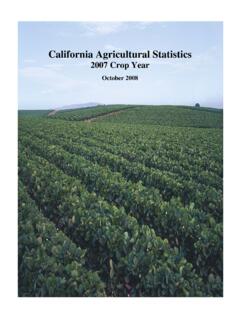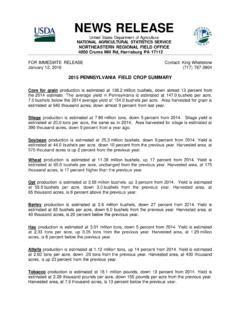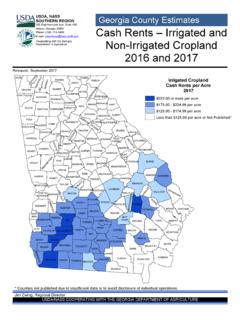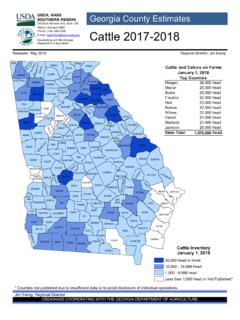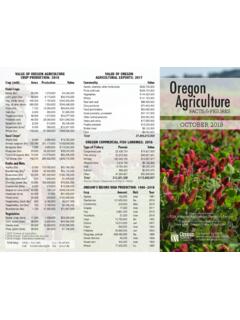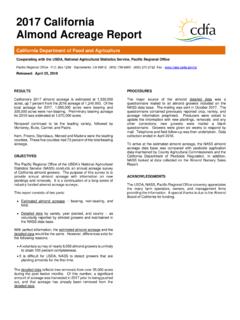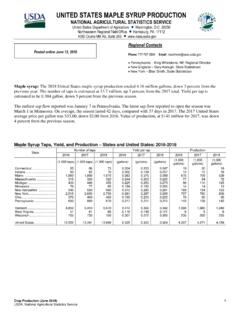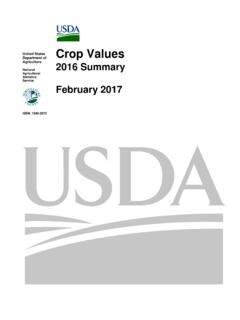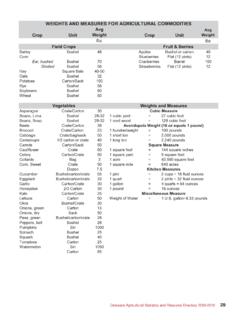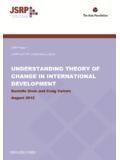Transcription of Statistical Summary Honey Bees - National Agricultural …
1 Top States: Number of Colonies(December 31, 2017)California 1,143,254 Florida241,176 Texas210,229 Idaho 130,988 Georgia119,609 North Dakota 97,105 About the ProgramThe NASS Bee and Honey Program has long provided Honey bee colony and Honey production data. After 2015, the program was expanded to track details about colony production and health. State and National data include: In the Census of Agriculture, every five years: number of colonies and operations, Honey production and sales Annual data since 1987: Honey - producing colonies; yield, production, stocks; price by color and marketing channel; value of production Quarterly data: total, lost, and renovated colonies; colony stressors; colony collapse disorder symptomsFor more information, go to: access the data online, go to: Highlights No.
2 2019-6 September 2019 Honey production up 2 percent in 2018 USDA s National Agricultural Statistics Service has collected data on Honey bee colonies and Honey production for decades as part of the Census of Agriculture and in annual Bee ColoniesIn 2017, the United States had million Honey bee colonies, down 12 percent from the record high million colonies in 2012, but down less than 1 percent from 2007 . Fig. 1 shows number of colonies since 1969; similar data are available going back to 1900. Fig. 2 shows that colony losses and gains occur seasonally. The greatest losses occur in the fall and winter quarters that start in October and January.
3 The largest number (cont d on p. 2) Fig. 1. Honey Bee Colonies, various years, 1969 2017 (million) : USDA NASS, Census of Agriculture (various years, 1969-2017).Fig. 2. Honey Bee Colonies: Total, Lost, and Renovated, 2015 2019 (quarterly) Total on rst day of qtr (million)Renovated during qtrLost during 2 20182019 JanOctJulAprJanOctJulAprJanOctJulAprJanO ctJulAprJanSource: USDA NASS, Honey Bee Colonies Report (various years). States Department of AgricultureNational Agricultural Statistics ServiceStatistical SummaryHoney Bees 500,000100,000of colony renovations occur in the spring quarter starting in april , making total colony numbers largest in the quarters that start in July and October.
4 For example, Fig. 2 shows significant losses in the last quarter of 2017 and first quarter of 2018; after 740,000 colonies were renovated in the second quarter, there were million colonies in the third quarter of 2018. In 2018, varroa mites were the largest stressor in every quarter. Colonies are renovated when they are requeened or they receive new Honey bees, generally through a nucleus hive (nuc) or a package of Honey data are for operations with five or more colonies. On January 1, 2019, the number of colonies was million, up 1 percent from January 1, Production and Honey production in 2018 from producers with five or more colonies totaled 152 million pounds, up 2 percent from 2017 (Fig.)
5 3). The average Honey yield per colony that year was pounds, down 2 percent from pounds in 2017. Colonies that produced Honey in more than one state were counted in each state where the Honey was produced. As a result, at the National level yield per colony may be understated, but total production is not impacted. Only colonies from which Honey was harvested are 3. Honey Production, 1987 2018 (million pounds)140160180200220240201520172011201 3200720092003200519992001199519971991199 319871989 Source: USDA NASS, Honey Report (various years).Between 2017 and 2018, Honey prices in the United States declined from cents per pound (the highest ever) to cents (Fig.
6 4). Prices at the National and state level reflect the shares of Honey sold through cooperative, private, and retail channels. Prices for each Honey color classification are derived by weighting the quantities sold for each marketing channel. Honey sales in 2017 were $320 million, up 21 percent from 2012, according to the Census of 4. Honey Prices, 1987 2018 (cents per pound)2017201320152009201120052007200120 031997199919931995198919871991 50100150200250 Source: USDA NASS, Honey Report (various years).Cost of PollinationBy surveying crop producers, NASS has been able to provide information on the fees they pay for the use of Honey bees to pollinate their crops.
7 The per acre fees for states in regions 6 and 7 are higher than in other regions (Table 1 and map). The total value of all pollination for regions 6 and 7 in 2017 was $273 million, down 7 percent from 1. Price per Acre for Pollination, by Region ($)20162017 Region 6 and : USDA NASS, Cost of Pollination Report (December 21, 2017).Map of Regions for Cost of Pollination Data Region 1 Region 2 Region 3 Region 4 Region 5 Regions 6 & 7 USDA is an equal opportunity provider, employer, and lender. (cont d from p. 1)
